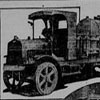Newspaper Narratives
These Newspaper Narrative lessons are designed to bring history to life through first-hand accounts of historical events in America's newspapers. The lessons include a powerpoint lecture, links to corresponding articles and engaging activities for students.

Advertising: Past and Present
Through online newspapers, students will compare newspaper advertisements from the early 1900s to the present to learn about the power of persuasive writing. For one of the activities, students will utilize the four qualities of a successful ad to create an advertisement of their own for a fictional product.
Cattle Kingdom
Students will view several online newspapers and follow the permalinks embedded in each powerpoint slide to learn about the Cattle Kingdom and its importance to Texas. The lesson includes a PowerPoint lecture, Cattle Trail Math, Cause and Effect, Photo Analysis, Word Search Puzzle, Cowboy songs, and links to more resources.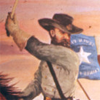
The Civil War (1861-1865)
In this lesson, students will research the Civil War and the events that led to it. They will present an account of one battle of their choice, including key facts and how it affected the war. They will use the PowerPoint slides and embedded newspaper links to access the online newspapers in order to research and find out more about what happened.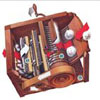
Cotton Farming
Students will develop an understanding of Cotton Farming in Texas and its economic impact. Working in groups or individually, students will use the PowerPoint slide notes to view online newspaper articles and follow the permalinks embedded in the pictures to find out more about cotton farming through newspapers.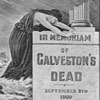
Hurricane Disaster: The Galveston Tragedy
Students will view online newspapers and follow the permalinks embedded in each PowerPoint slide to learn about the Galveston Hurricane of the 1900's and its impact on surrounding areas.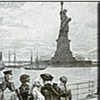
Immigration to the United States
Historical newspapers are a great source of information regarding immigrant entry to the United States during the 19th and 20th century. Through interactive video, PowerPoint slideshow, and online newspaper links, students will learn how and why immigrants came to the U.S.
Innovations of the 20th Century
The twentieth century was the age of commercialized entertainment, modern sports, and new modes of transportation such as the automobile, airplane, and the expansion of the railway. This lesson includes links to online newspapers articles, PowerPoint slideshow, Innovations worksheet, Name and Match activity, and Word Scramble.
Last Comanche Chief
Quanah Parker was the last chief of the Comanches whose tribe roamed over the area where Pampas, Texas stands. Students will view several online newspapers to learn about the Comanche Chief Quanah Parker, and identify and explore the important issues of this Native American group.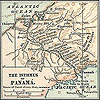
Panama Canal
The Panama Canal, built from 1904 to 1914, is the key conduit for international maritime trade. Students will view several online newspapers to learn about the Panama Canal and its significance and economic impact on surrounding regions.
Our System: Political Parties
In this lesson, students will view online newspapers and embedded permalinks to learn about elections and political campaigns. They will use the Elections Worksheet, the Electoral Vote, Count the Votes, and Comparing Political Parties Worksheet to guide their research.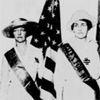
Progressive Era
Using online historical newspapers, students will research Progressive Era topics such as Womens' Suffrage, the Grange, the Farmer's Alliance, the Populist Party, James Hogg, the Progressive Movement, NAACP, and Prohibition. They will use the Interactive Digital Collage, Word Search Puzzle, Paper Doll Coloring Activity, and other resources to understand the beliefs, values, and trends of that era.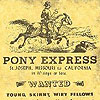
Pony Express
The Pony Express was a fast mail service crossing the Great Plains, the Rocky Mountains, and the High Sierra's from St. Joseph, Missouri to Sacramento, California. It became the West's most direct means of east-west communication before the telegraph. Students will view several online newspapers to learn about this form of communication in the nineteenth century.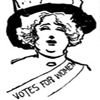
Suffragettes
Students will view several online newspapers and follow the permalinks embedded in each PowerPoint slide to learn about the Suffrage Movement and its role in changing attitudes and the efforts at earning equality.
Texas Oil Boom
Currently, Texas drilling produces about 400 million barrels of crude oil each year that is nearly 20% of the gross domestic product. Students will learn about the history of the Texas oil boom through newspapers. Learning activities include the Texas Oil worksheet, T-chart, Facts and Opinion, Short Story, and Big Bucks.